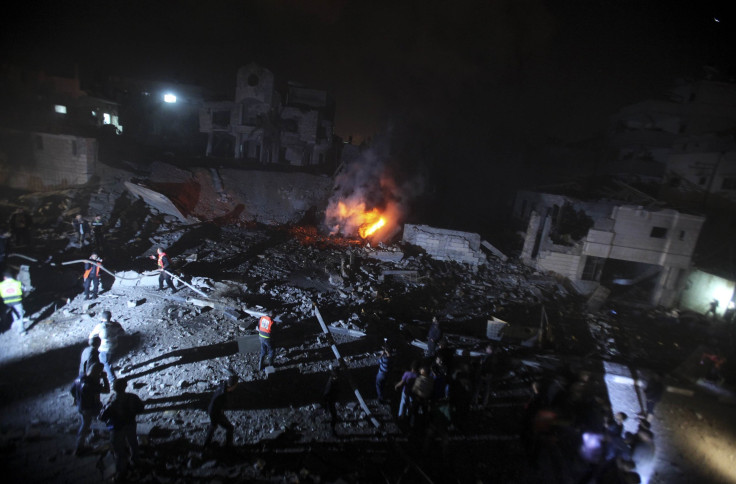Tweeting With The Enemy: Israeli Attack On Hamas Blows Up On Social Media

Citizen journalism just got drafted.
An Israeli military strike against Hamas is not necessarily out of the ordinary, but what made Wednesday’s offensive in the Gaza Strip so different was that it coincided with an ambitious social-media campaign -- one that may be blurring the lines between the military and the media.
The campaign, unleashed concurrently with Israel’s “Pillar of Defense” operation, includes a Twitter stream by the Israeli Defense Force (@IDFSpokesperson, complete with a blue “verified user” checkmark). Over the last 24 hours, the IDF has been posting tweets, blogs, photos and videos of the conflict as it unfolds, all with blow-by-blow accounts and commentary of the offensive. In some cases, the IDF is even publicly threatening its enemy.
“We recommend that no Hamas operatives, whether low level or senior leaders, show their faces above ground in the days ahead,” read one tweet, which was re-tweeted more than 4,000 times.
The campaign also includes a Tumblr account, where the IDF has been posting graphics that explain its motives and rationale for the strike. “The IDF does its utmost to avoid civilian casualties when striking back against the Hamas terror organization: placing recorded telephone calls, dropping warning leaflets and even diverting missiles mid-flight if civilians are spotted in the line of fire,” read one caption.
Meanwhile, an IDF live blog offered up-to-the-minute posts of rocket strikes, as videos of said strikes were uploaded to YouTube. The blog’s headline read “IDF launches widespread attacks on Hamas terror targets.”
The effort seemed to represent a new kind of social-media warfare: part military journalism, part public relations campaign. It might also signal the largest change in combat documentation since the mid-1960s, when broadcast-TV coverage of the war in Vietnam earned it the nickname the “living room war.”
However, some journalists have suggested that the social-media campaign could backfire. In a Wednesday evening blog post, the Washington Post’s Caitlin Dewey wondered if Hamas, not Israel, was actually “winning the Twitter war.” Dewey pointed out that, while tweets were pouring in under the hashtag #PillarofDefense, pro-Hamas tweets seemed to be flooding Twitter at a much higher rate. As of 5 p.m. Wednesday, Dewey wrote, Twitter users had posted some 120,000 tweets under the hash #GazaUnderAttack, compared to a mere 808 posts under the hashtag #PillarofDefense.
“Gaza’s cause is sounding louder, and further, than the IDF’s,” wrote Dewey, “a strong indication of the grass-roots movement behind it.”
On Thursday, the Associated Press reported that, one day into the operation, “Pillar of Defense” is already Israel’s most intense assault on the Palestinian territory in four years. Since the offensive began on Wednesday, the Israeli military has killed 14 Palestinians. Three children and seven Hamas militants are among the dead, according to AP. The front page photo on the Washington Post on Thursday morning showed a photo of Jihad Misharawi, an Arabic BBC journalist, completely distraught as he held the body of his 11-month-old son, Omar, who was killed during an air strike.
Three Israelis have also been killed in a rocket in Gaza. The IDF promply tweeted about the casualties in a post apparently aimed at the United States: "Good morning to our friends in #America. While you were sleeping, 3 Israelis were killed when a rocket hit their house."
As of Thursday afternoon, the IDF Twitter account has amassed more than 100,000 followers. It its most recent tweet, it pointed out that terrorist groups from Gaza fire rockets from residential neighborhoods. “Would you raise your child in such a neighborhood?” it asked.
One Twitter user replied: “@IDFSpokesperson is a very good propagandist! Wow!”
© Copyright IBTimes 2024. All rights reserved.












